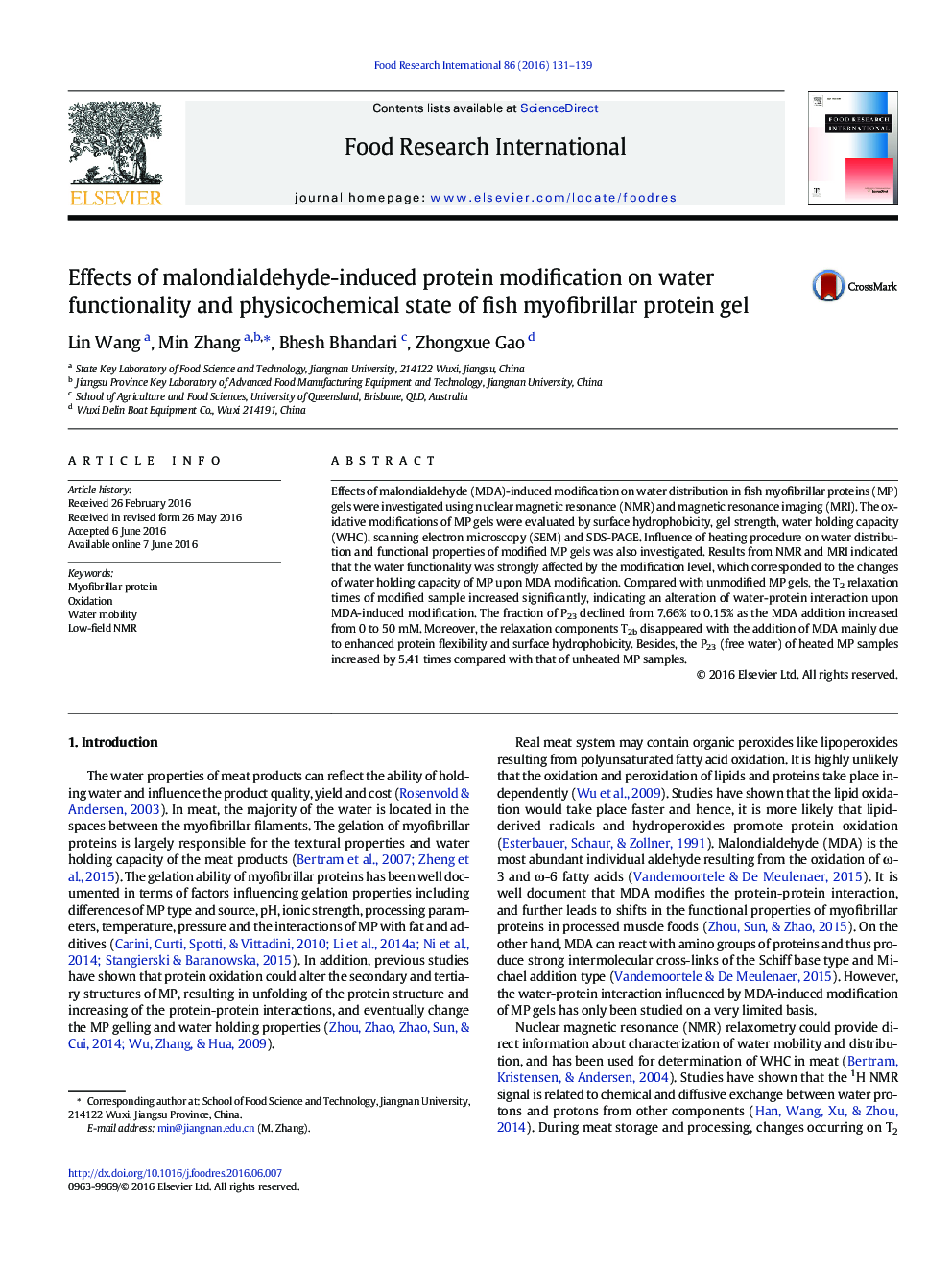| Article ID | Journal | Published Year | Pages | File Type |
|---|---|---|---|---|
| 4561184 | Food Research International | 2016 | 9 Pages |
•The LF-NMR technique and MRI technique for assessing the mobility water in myofibrillar proteins was investigated.•Malondialdehyde (MDA) affected water functionality of myofibrillar proteins (MP).•The relaxation components T2b disappeared with the addition of MDA.•The P23 (free water) of myofibrillar protein was elevated significantly after heating.
Effects of malondialdehyde (MDA)-induced modification on water distribution in fish myofibrillar proteins (MP) gels were investigated using nuclear magnetic resonance (NMR) and magnetic resonance imaging (MRI). The oxidative modifications of MP gels were evaluated by surface hydrophobicity, gel strength, water holding capacity (WHC), scanning electron microscopy (SEM) and SDS-PAGE. Influence of heating procedure on water distribution and functional properties of modified MP gels was also investigated. Results from NMR and MRI indicated that the water functionality was strongly affected by the modification level, which corresponded to the changes of water holding capacity of MP upon MDA modification. Compared with unmodified MP gels, the T2 relaxation times of modified sample increased significantly, indicating an alteration of water-protein interaction upon MDA-induced modification. The fraction of P23 declined from 7.66% to 0.15% as the MDA addition increased from 0 to 50 mM. Moreover, the relaxation components T2b disappeared with the addition of MDA mainly due to enhanced protein flexibility and surface hydrophobicity. Besides, the P23 (free water) of heated MP samples increased by 5.41 times compared with that of unheated MP samples.
Graphical abstractFigure optionsDownload full-size imageDownload as PowerPoint slide
